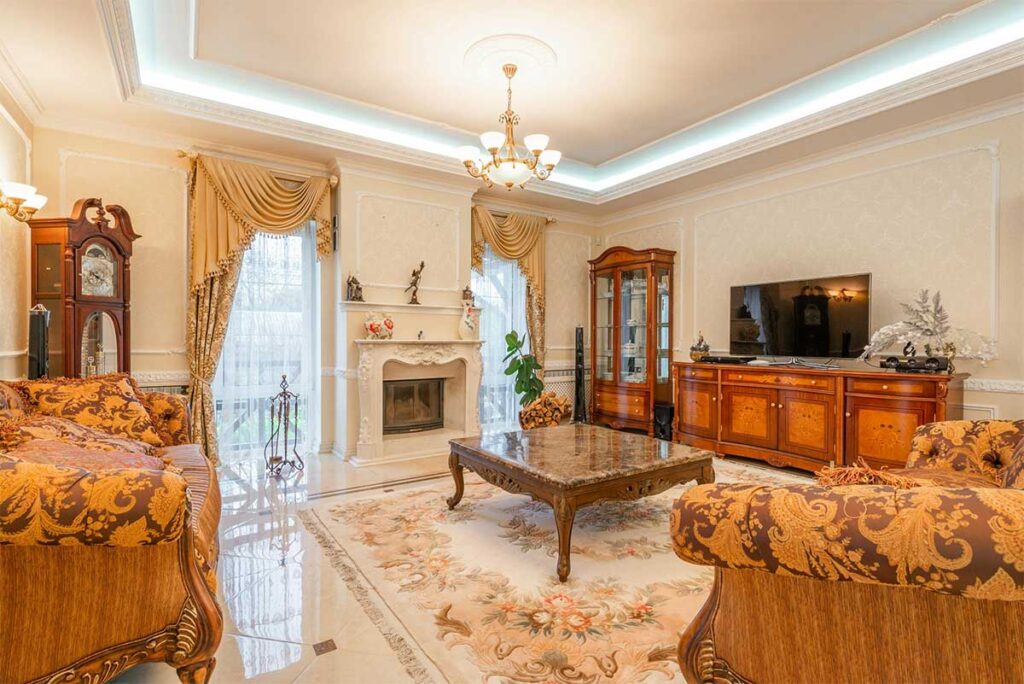An antique fireplace is far more than a functional feature—it’s a striking centerpiece that infuses any room with character, charm, and timeless elegance. These architectural treasures often boast unique craftsmanship and intricate details that set them apart as focal points. Decorating an antique fireplace not only highlights its historical significance but also ensures it blends seamlessly with the surrounding décor, enhancing the overall aesthetic of the space.
By drawing inspiration from the fireplace’s materials, carvings, and era, homeowners can create a display that reflects their personal style while honoring the piece’s heritage. Thoughtful decoration, from the mantel to the hearth, provides an opportunity to celebrate the past while making the fireplace a cohesive element of modern design.
Understanding the Style and Era of Your Antique Fireplace
Identifying the style and historical period of your antique fireplace is crucial for creating an authentic and cohesive decor. Understanding the era helps you choose the right decorations, colors, and furniture that complement the piece’s unique character.
Common antique fireplace styles include Victorian, Edwardian, and Art Deco, each with distinct design elements. Victorian fireplaces, popular in the mid-to-late 19th century, often feature intricate carvings, ornate details, and dark wood or marble finishes.
These fireplaces exude a sense of grandeur, with embellishments like floral patterns, garlands, and elaborate columns. In contrast, Edwardian fireplaces, which emerged in the early 20th century, are typically simpler, with cleaner lines and more refined detailing, emphasizing comfort and practicality.
Art Deco fireplaces, dating back to the 1920s and 1930s, present bold geometric shapes, streamlined forms, and luxurious materials such as chrome, glass, and lacquered wood, reflecting the optimism and modernism of the era.
To determine the heritage of your fireplace, examine its materials, carvings, and design elements closely. Look for distinctive features, such as the use of specific metals or stones, the shape of the mantel, or the style of the surround. Carvings or motifs, like floral or geometric patterns, can also provide valuable clues to the period.
Once you understand the historical context, use this knowledge to guide your decoration choices. Victorian fireplaces may pair well with rich, warm color schemes, heavy drapes, and vintage furniture, while Art Deco fireplaces thrive in minimalist, modern settings with sleek furniture and bold color contrasts. By aligning your decor with the style and era of the fireplace, you ensure an authentic look that enhances its presence.
Choosing Decorative Elements for the Mantelpiece
The mantelpiece is often the focal point of a room, offering a perfect space for showcasing decorative items that complement the style of your fireplace. Selecting the right objects can enhance the aesthetic of the fireplace while preserving its historical charm.
Start by considering the style of the fireplace. For a Victorian or Edwardian mantel, vintage candlesticks, framed artwork, and antique clocks work well, as these items align with the traditional elegance of these periods. For more modern or Art Deco fireplaces, sleek vases, minimalist sculptures, or geometric artwork may be more suitable, reflecting the clean lines and bold aesthetic of the era.
When arranging items on the mantel, balance is key. Pay attention to height, symmetry, and visual weight. For example, placing taller items, like a large mirror or clock, at the center creates a sense of balance. Smaller objects, such as candles or decorative bowls, can then be arranged symmetrically on either side. This helps avoid a cluttered look and draws attention to the fireplace itself.
Layering objects can add depth and visual interest to the mantelpiece. For instance, placing a framed piece of art in the background and a collection of smaller items in front creates a pleasing sense of dimension. However, it’s essential not to overcrowd the mantel. Too many items can overwhelm the fireplace and detract from its beauty.
Seasonal decorations are a great way to keep the mantelpiece fresh and relevant throughout the year. Incorporating items like autumn leaves, festive wreaths, or winter-themed candles allows you to update the mantle according to the season while keeping the overall look cohesive.
Integrating the Fireplace into the Room’s Design
An antique fireplace can become a stunning centerpiece when integrated seamlessly into a room’s design. To create a cohesive look, it’s important to choose furniture, rugs, and wall colors that complement the fireplace’s materials and style.
Start by selecting furniture that compliments the fireplace’s design. For instance, if your fireplace is made of ornate marble or wood, consider pairing it with traditional furniture in rich fabrics or dark woods. If the fireplace has a simpler design, like an Art Deco or mid-century style, modern furniture with clean lines can create a striking contrast. Rugs are another important element—opt for one with colors and patterns that enhance the fireplace’s tones. A patterned rug can balance out a more detailed fireplace, while a solid, muted rug can allow the fireplace to stand out.
Wall colors also play a significant role in harmonizing the fireplace with the room. Neutral tones, such as soft grays, creams, or muted blues, can provide a subtle backdrop that allows the fireplace’s materials to shine. If the fireplace is bold or intricately designed, more neutral walls can prevent the space from feeling overly busy.
Pairing the fireplace with other antiques can create a sense of historical continuity, but blending it with modern pieces can offer a balanced, eclectic feel. Mixing periods and styles gives the room character and depth, so don’t be afraid to combine antique furniture with contemporary décor for a more dynamic space.
Positioning furniture around the fireplace enhances its role as a gathering spot. Arrange seating to face the fireplace, creating an inviting atmosphere for conversation. Adding subtle details, such as antique fire tools or a decorative screen, can further accentuate the fireplace’s presence without overwhelming the room. These thoughtful additions elevate the fireplace’s charm while ensuring the overall design remains balanced and inviting.
Preserving and Caring for an Antique Fireplace
Maintaining an antique fireplace is crucial not only for preserving its condition but also for ensuring it continues to be a treasured feature in your home. Proper care and maintenance help protect the fireplace’s historical value and aesthetic appeal while allowing you to decorate around it safely.
Start by cleaning the materials carefully. Whether your fireplace is made of stone, cast iron, or tile, use the appropriate cleaning methods to avoid damage. For stone, such as marble or limestone, use a soft cloth with a mild soap solution to avoid abrasive cleaning products that could scratch the surface. Cast iron can be cleaned with a damp cloth and a gentle rust remover, while tile can be cleaned with a non-abrasive cleaner to preserve its finish. Always avoid harsh chemicals or scrubbing tools that could damage the surface.
Inspecting the fireplace regularly for structural issues is essential. Over time, the heat and wear can cause cracks or loose components, particularly in older fireplaces. Check the mantel, surround, and hearth for signs of damage or instability. If you notice any issues, consult a professional to ensure the fireplace remains safe to use, especially if it is still functional.
When decorating an antique fireplace, consider the materials used. For instance, using protective finishes or fire-resistant materials for decoration helps prevent damage from heat or soot. Heat-resistant screens or fireproof mats can be used to protect the surrounding area, while non-flammable decorations like metal or ceramic pieces should be chosen for the mantle.
Final Words
Decorating an antique fireplace offers the joy of honoring its history while infusing personal style into your home. Understanding its era and design helps create a harmonious, authentic look that complements the room. Striking a balance between preserving the fireplace’s heritage and enhancing its functionality ensures it remains a timeless centerpiece. By blending tradition with individuality, your antique fireplace can become a cherished feature that reflects both its rich past and your unique taste, adding warmth and character to your space for years to come.






